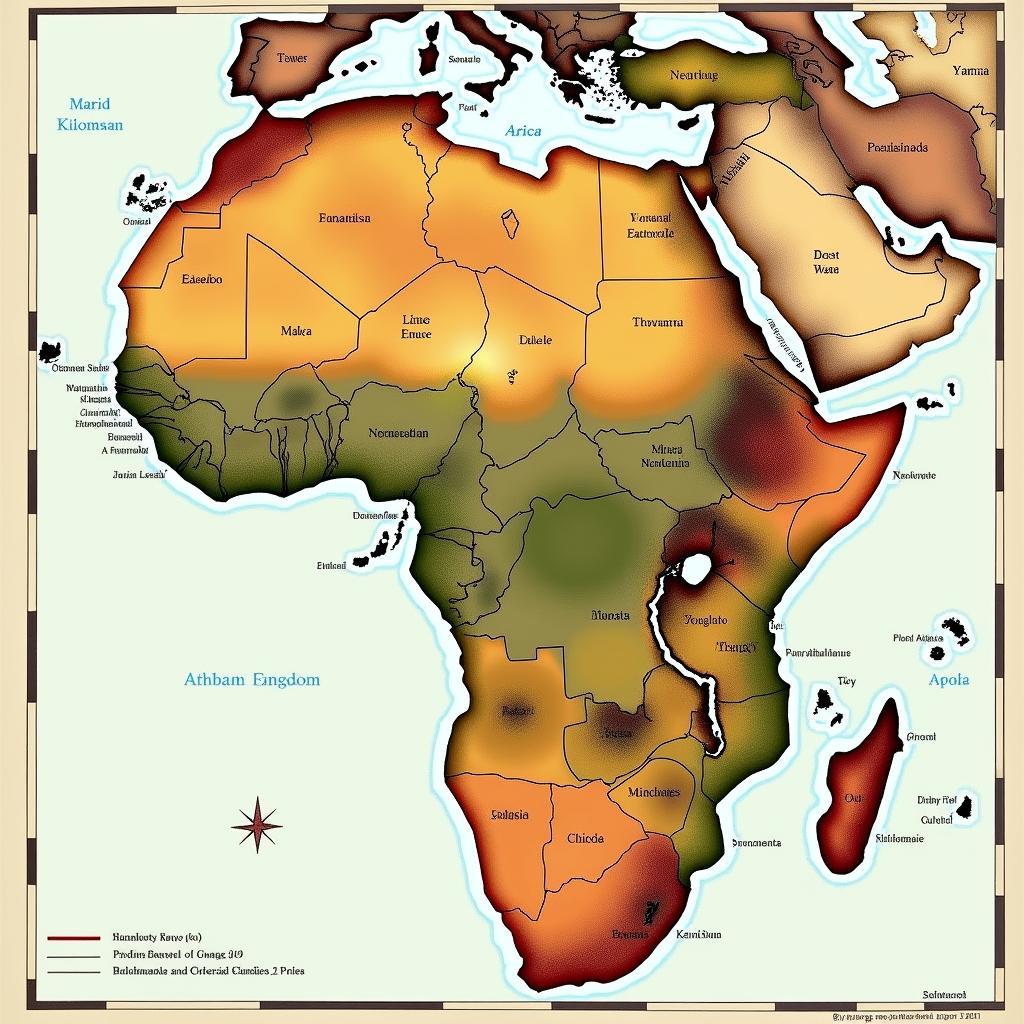Exploring the Vibrant World of African Drawing Murals
African Drawing Murals offer a captivating glimpse into the rich tapestry of African culture, history, and artistic expression. From ancient rock paintings to contemporary street art, these murals serve as powerful storytellers, preserving traditions and reflecting the evolving social landscape. They showcase a diverse range of styles, techniques, and themes, each echoing the unique identity of the communities that create them. Let’s delve deeper into this fascinating world of art. You can learn more about specific styles like african doodles.
A Journey Through Time: The History of African Drawing Murals
The history of African drawing murals stretches back millennia, with some of the earliest examples found in the rock art of the Sahara Desert and other regions. These ancient paintings, often depicting animals, hunting scenes, and daily life, provide invaluable insights into the lives of prehistoric communities. Over time, mural traditions evolved, incorporating new techniques and reflecting changing social and spiritual beliefs. From the intricate geometric patterns of Ndebele homesteads in South Africa to the vibrant murals adorning the walls of modern-day cities, each mural tells a unique story.
Unveiling the Symbolism: Decoding African Mural Art
African drawing murals are often imbued with profound symbolism, reflecting the cultural values, spiritual beliefs, and historical narratives of the communities that create them. Animals, plants, and geometric patterns often hold specific meanings, conveying messages about ancestry, identity, and the relationship between humans and the natural world. For example, the leopard, a recurring motif in many African cultures, often symbolizes power, strength, and leadership. Similarly, the spiral, a common geometric pattern, can represent growth, transformation, and the cyclical nature of life.
Materials and Techniques: From Earth Pigments to Modern Media
Traditional African drawing murals often utilize natural materials readily available in the local environment. Earth pigments, charcoal, and plant dyes are commonly used to create vibrant colors, while brushes are fashioned from natural fibers or animal hair. Techniques vary widely across different regions and cultures, ranging from intricate line work to bold, expressive brushstrokes. In contemporary mural art, artists often incorporate modern media such as acrylic paints and spray cans, blending traditional techniques with contemporary influences. Explore the diverse world of african tribes drawing.
From Sacred Spaces to Public Art: The Diverse Contexts of African Murals
African drawing murals are found in a variety of contexts, reflecting their diverse functions and significance. From sacred spaces such as shrines and temples to public spaces like community centers and urban streets, murals play an integral role in shaping the visual landscape and fostering a sense of community identity. They can serve as historical records, spiritual expressions, or simply as forms of artistic decoration, enriching the lives of those who encounter them.
African Christian Art: A Fusion of Faith and Tradition
With the introduction of Christianity, African artists incorporated religious themes into their mural traditions, creating a unique fusion of faith and cultural expression. African christian art often features biblical scenes and figures reinterpreted through an African lens, reflecting the integration of Christian beliefs into the existing cultural framework.
What is the primary purpose of African drawing murals?
African drawing murals primarily serve as a form of storytelling, preserving cultural traditions, historical narratives, and spiritual beliefs.
The Future of African Drawing Murals: Preserving Tradition, Embracing Innovation
Today, African drawing murals continue to evolve, blending traditional techniques with contemporary influences. Artists are experimenting with new materials, exploring innovative themes, and engaging with global artistic trends, while still remaining rooted in their cultural heritage. You can see this blend in african geometric abstract print. This vibrant art form is not only a testament to the rich artistic legacy of Africa but also a powerful expression of its ongoing cultural dynamism.
“African murals are more than just decorations,” says Dr. Abena Osei, a renowned art historian specializing in African art. “They are living archives of cultural memory, reflecting the dynamic interplay of tradition and innovation.”
“The use of vibrant colors and symbolic imagery in African murals creates a powerful visual language that transcends spoken words,” adds Adebayo Kolawole, a contemporary mural artist based in Lagos, Nigeria.
In conclusion, African drawing murals offer a captivating window into the diverse cultures and artistic traditions of the continent. From ancient rock paintings to contemporary street art, these murals serve as powerful storytellers, preserving history, reflecting cultural values, and inspiring future generations. Exploring the world of African drawing murals is a journey of discovery, unveiling the rich tapestry of human creativity and the enduring power of artistic expression. Perhaps surprisingly, even aspects of african american gangs in los angeles have adopted mural art as a form of expression.
FAQ
- What are some common themes depicted in African drawing murals?
- What materials are traditionally used to create African drawing murals?
- Where can I see examples of African drawing murals?
- How has the style of African drawing murals changed over time?
- What is the significance of symbolism in African drawing murals?
- Who are some notable African mural artists?
- How can I learn more about African art and culture?
Do you have more questions about other art forms in Africa? Explore more articles on our website.
When you need assistance, please contact us by Phone: +255768904061, Email: [email protected], or visit us at Mbarali DC Mawindi, Kangaga, Tanzania. Our customer service team is available 24/7.

